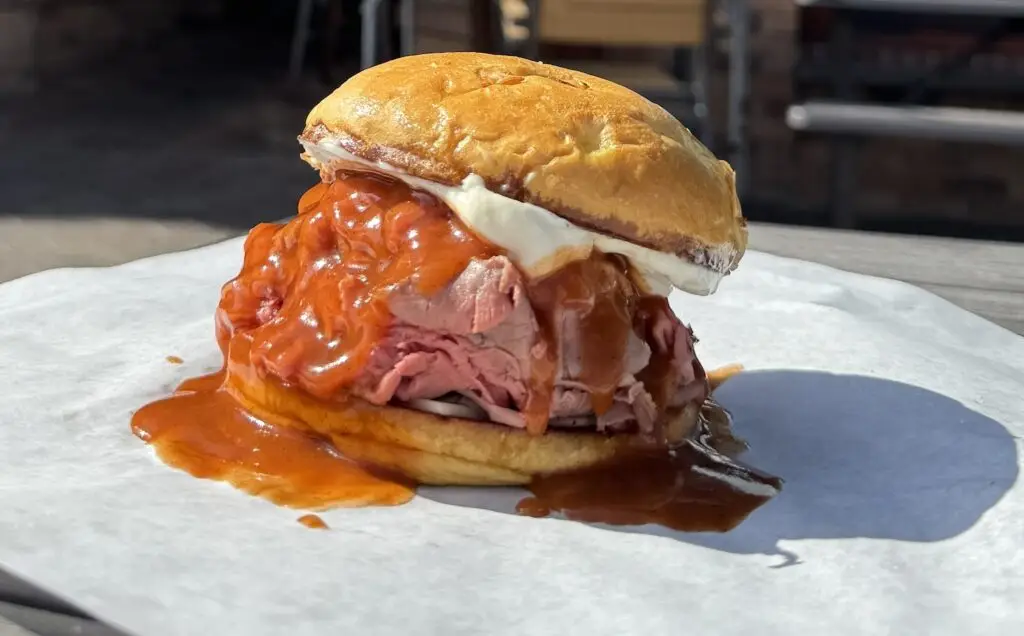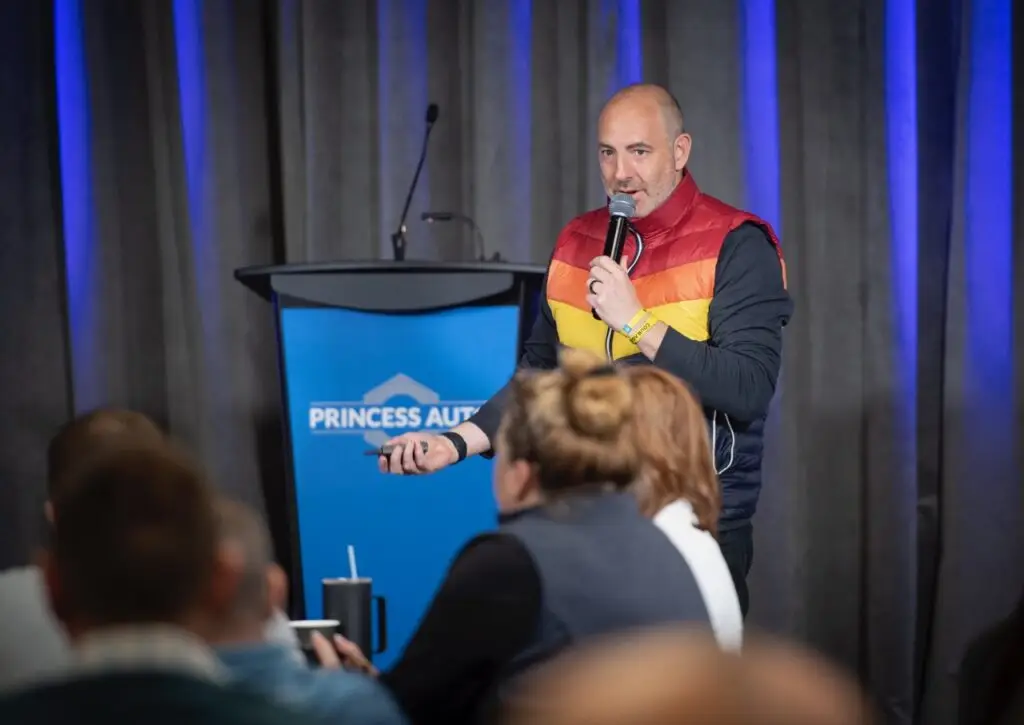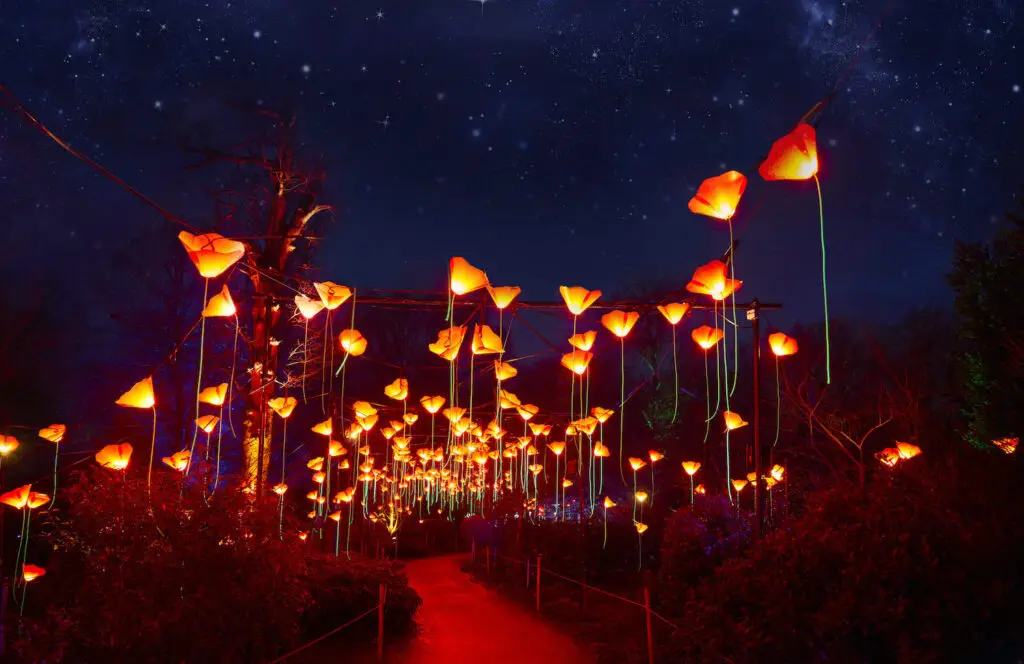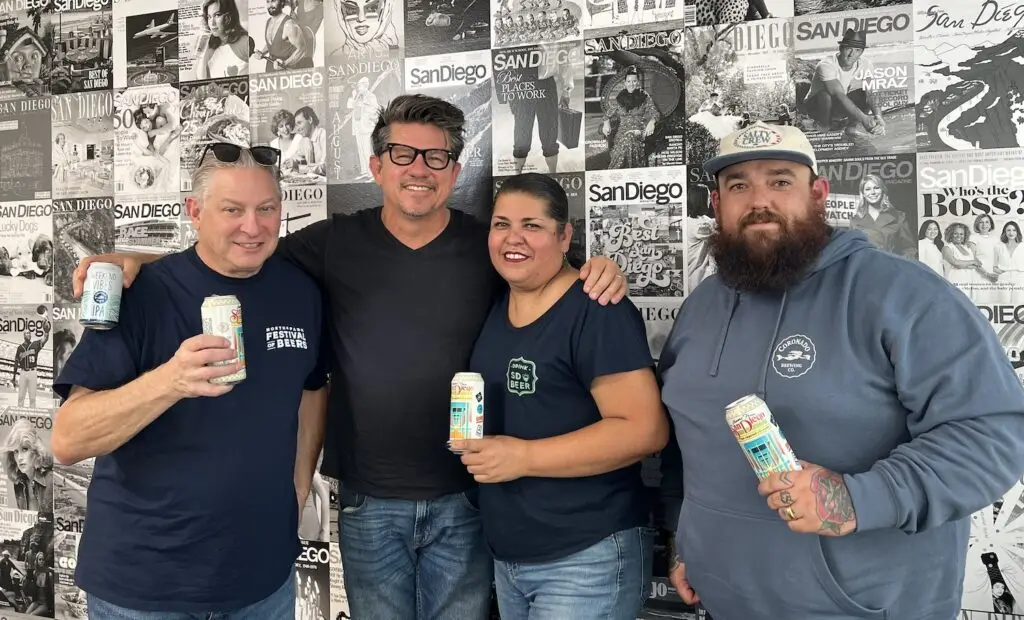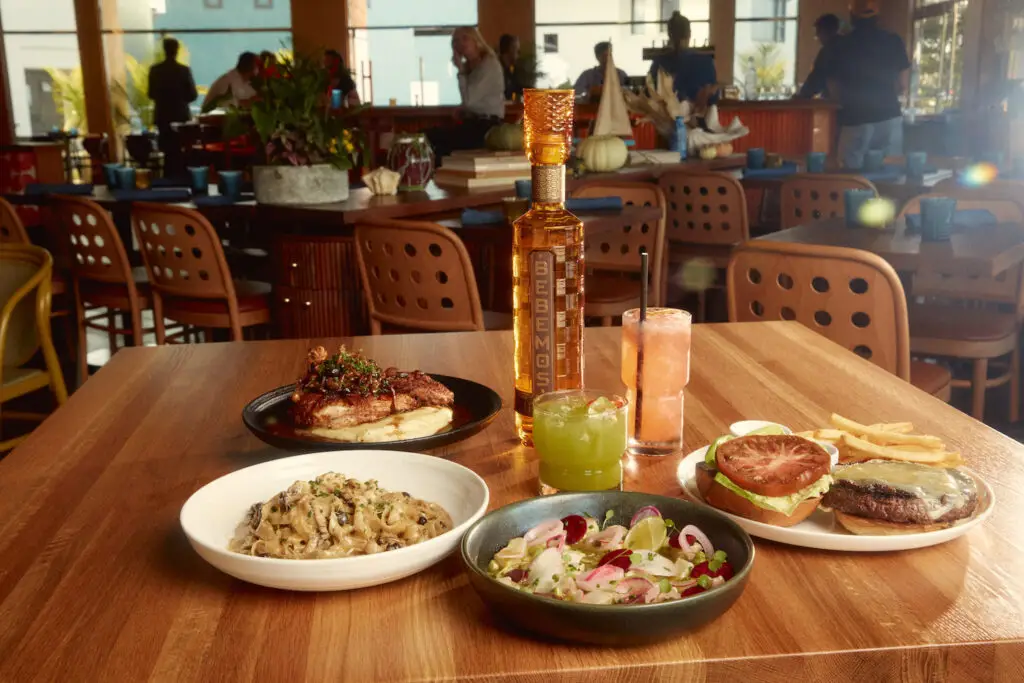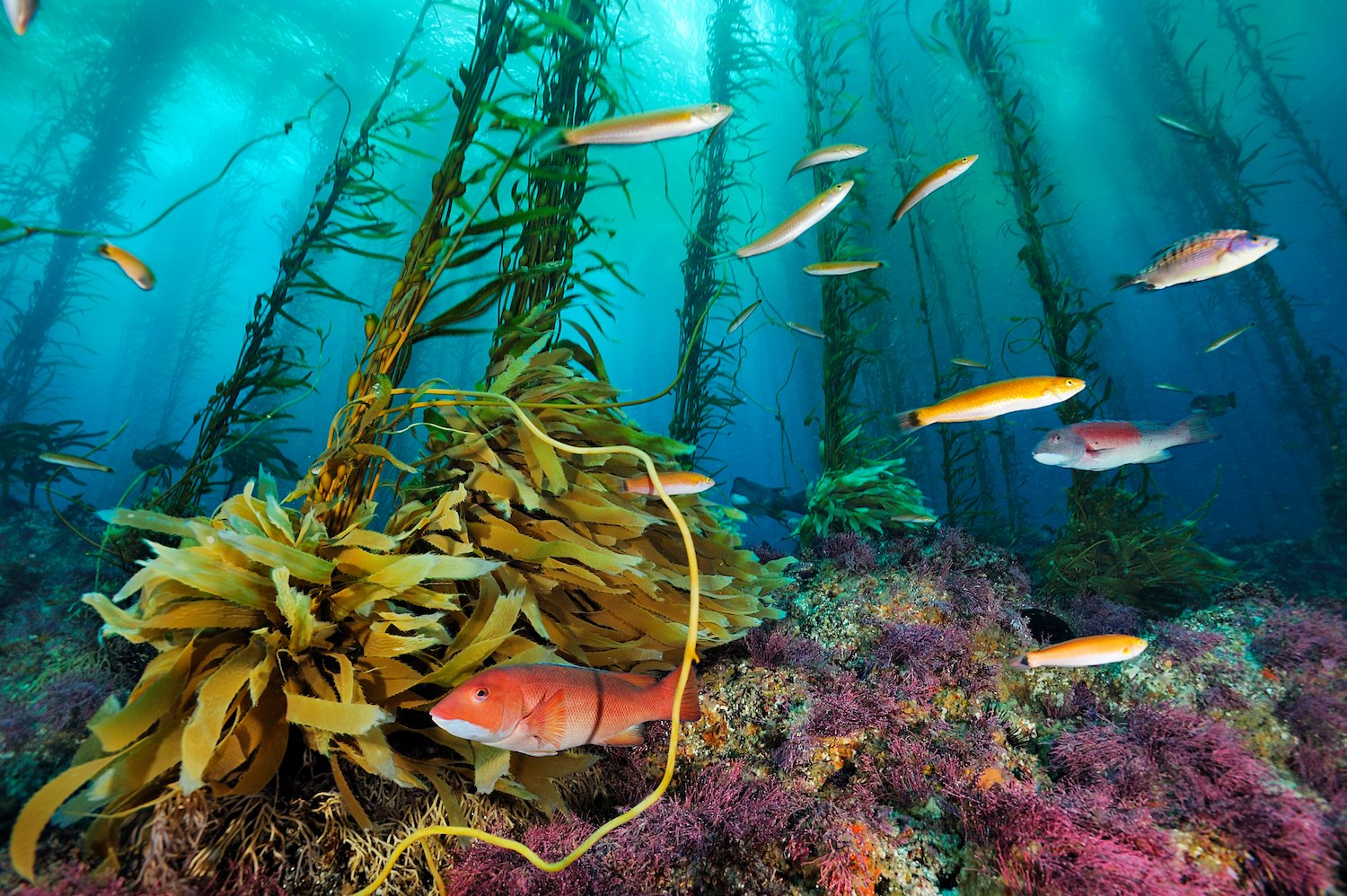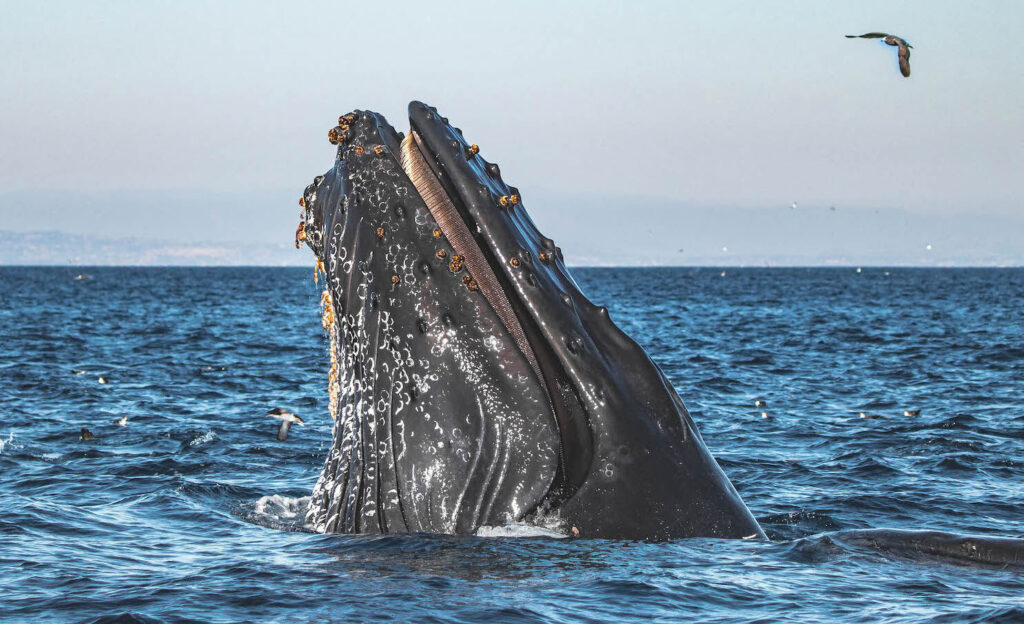Determined not to flip the kayak, I paddle hard, straight into the swell, following my guide Lillie Mulligan’s lead. The offshore wind drives a brisk fog atop the San Diego-Scripps Coastal State Marine Conservation Area, challenging our forward momentum. “Paddle harder,” Mulligan yells as our kayak ascends a wave.
I pray we don’t topple over onto a stingray, thinking maybe kayaking isn’t the best tactic to get acquainted with our coast. Though I’ve lived in San Diego for four years, I have an embarrassingly flimsy relationship with the sea. In summer, I occasionally paddle board the bay, boogie board Moonlight Beach, toss tennis balls for my dog in OB, or amble along Sunset Cliffs. But after reading that La Jolla Cove boasts the densest variety of animal life at any US beach—even those in Hawaii or Alaska—I couldn’t help becoming curious about our front yard, a destination that over 4 million people visit annually.
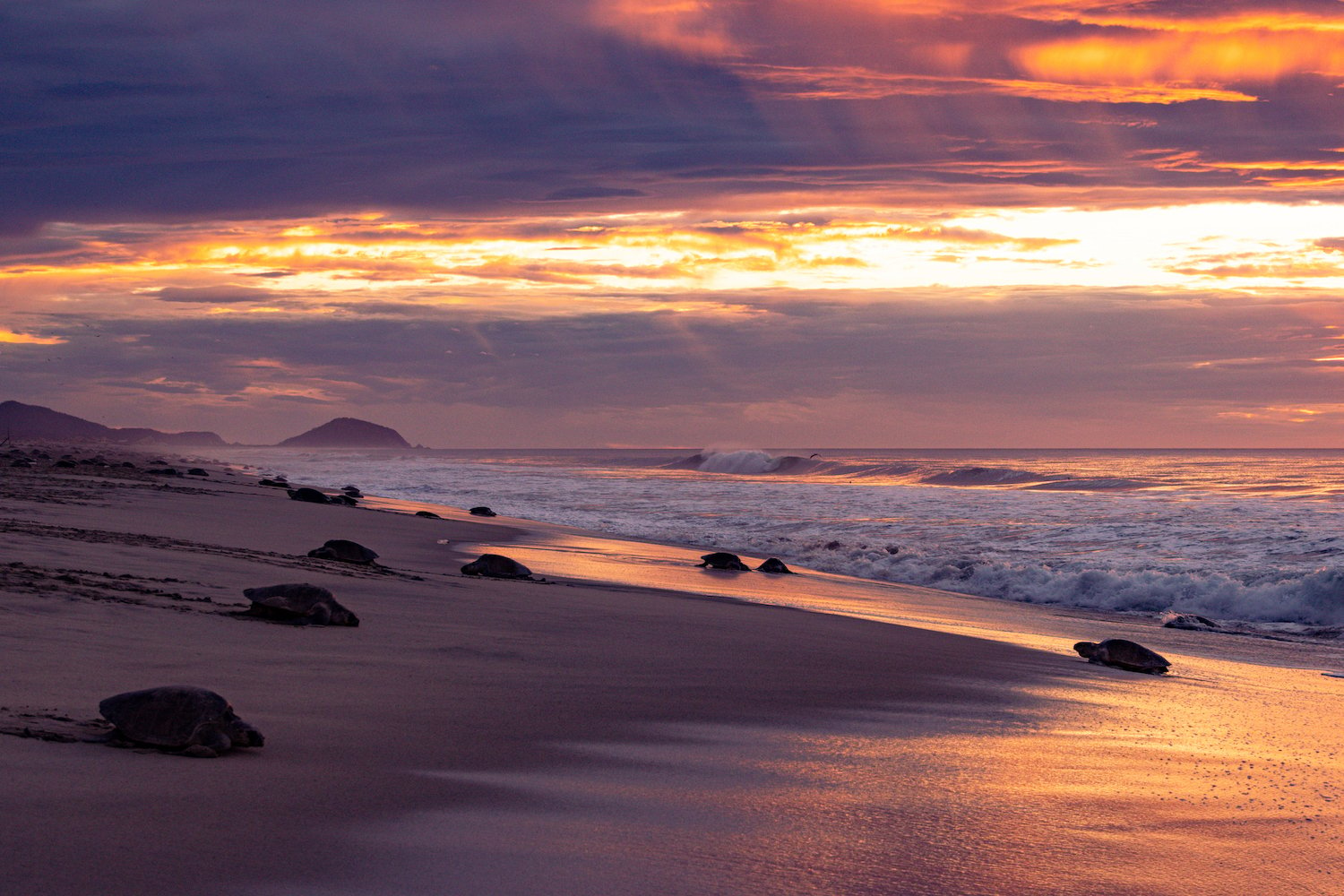
Olive ridley sea turtles shuffle ashore at Morro Ayuta Sea Turtle Sanctuary in Oaxaca for an arribada—a mass synchronized nesting.
Which is how I found myself here, battling the surf with Mulligan, an ocean conservation coordinator for local nonprofit Wildcoast, an environmental organization co-founded by whale scholar Serge Dedina and turtle conservationist Wallace J. Nichols 25 years ago. Today, Dedina still helms Wildcoast, but he’s quick to give credit for the robustness of La Jolla’s marine protected areas (MPAs) to his staff—70 percent of which are women.
“Look at all these people recreating,” Mulligan exclaims, motioning at the clumps of kayakers and paddle boarders mingling outside the caves in the MPA that Wildcoast actively monitors. “They’re here because they know they will see marine animals.”
She points out silvery bait fish darting amid kelp forests, along with orange Garibaldi (California’s state fish), leopard sharks, cormorants, and pelicans, all markers of ocean health. “Look for the green sea turtles,” she adds, tying her hair into a knot and peering into the water. “La Jolla has four.”

Wildcoast staff members free an olive ridley sea turtle tangled in a fishing net in Oaxaca, Mexico.
Dedina calls the Eastern Pacific green sea turtle one of Wildcoast’s biggest success stories. When he and Nichols were young PhD candidates surfing southern Baja, they only ever saw dead turtles. Over 30,000 were slaughtered annually to serve as a pre-Viagra food that purportedly increased male virility.
Wildcoast’s earliest campaign, masterminded by communications and policy director Fay Crevoshay, rallied the pope to speak out in support of protected places for nesting mothers. The team put up signs on beaches, on billboards, and in newspapers; on them, a model posed beside the words “My man doesn’t need turtle eggs, because he knows they don’t make it more powerful” in Spanish. This got locals educating their neighbors about not eating turtles.
The latter became a key part of Wildcoast’s approach: Start small by encouraging residents to protect their wildlands. Rather than having some outside wonks policing fragile ecosystems, collaborate with folks on the ground, teaching and inviting them to become invested in safeguarding their backyards from harm. Turns out that working with Mexican communities to protect sea creatures south of the border benefits the overall health and diversity of San Diego’s coastal regions, too.
After seeing too many stories of blue whale sightings off San Diego’s coast to ignore, I book a summer whale-watching trip. Eager faces peer into the blue, seeking an Instagrammable moment. As La Jolla’s palaces shimmer atop fragile sandstone cliffs, docents wax poetic about San Diego’s rich waters. It is possible to see whales year-round here: gray, humpback, orca, fin, Bryde’s, blue.
“Whales rebounded because we stopped whaling,” says Russell D. Moore, whale-watching boat captain with Xplore Offshore. “Today, our waters are a testament to a well-managed biosystem. Wildcoast has contributed to that.”
It’s true. Twenty-five years ago, a coalition of conservationists, including Wildcoast, stopped Mitsubishi from constructing a massive salt mine in San Ignacio Lagoon in Baja, an important gray whale breeding site. Five years later, the team helped to permanently safeguard 450,000 acres there. Today, that space is a marine protected area and a UNESCO World Heritage Site. With their breeding site preserved, the whales are thriving.
“More whales mean we have another problem,” Moore says. “San Diego is the Wild West of whale watching—boats are harassing whales by getting too close.”
So, in response, Wildcoast’s Ann Wycoff, Annelise Tappe, and Devon Lukasiewicz developed the Protect the Locals campaign to educate whale-watching guides and visitors on the importance of keeping a safe distance, so our beloved whales’ breeding and migration patterns aren’t disrupted by our adoration.
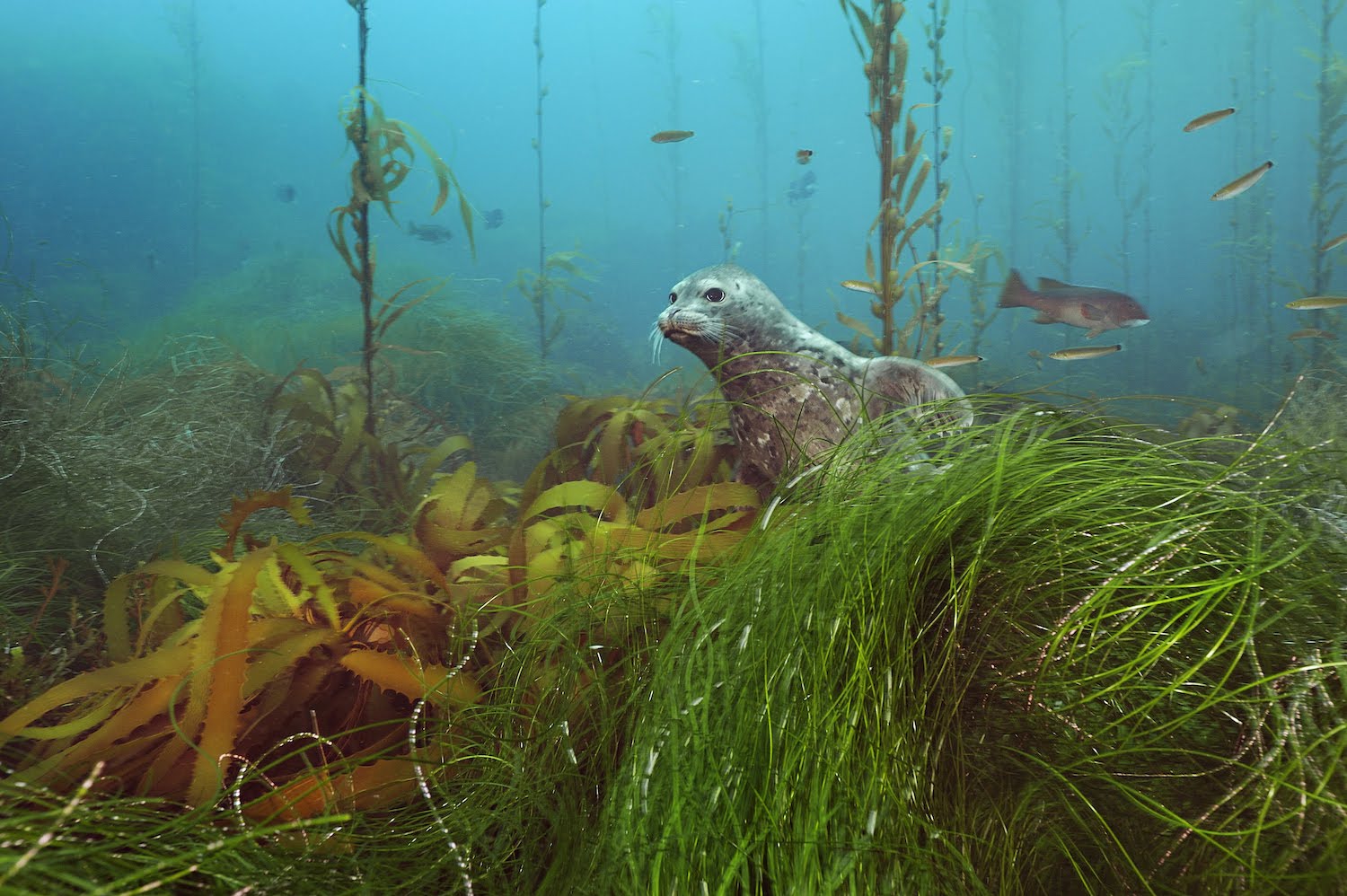
MPAs offer a safe home for adorable ocean critters like harbor seals.
On my whale-watching venture, none grace us with their presence. Surprisingly few visitors appear disappointed. Rather, people seem energized by the salty wind on our faces; the pod of dolphins that swoops in to say hello isn’t a shabby consolation prize, either.
Another morning on the water, this time on a speedboat gliding north from Mission Bay. The resident dog, a mutt called Captain, sits next to Joe Cooper, the boat’s true captain, barking whenever she spots a sea lion or dolphin.
Despite my kayaking struggles, Mulligan and Cooper invited me on one of their monitoring excursions to educate fishers about marine protected areas. San Diego County boasts 11 MPAs: Tijuana River Mouth (Tijuana Estuary), Cabrillo (off southern Point Loma), Famosa Slough (between Old Town and OB), two in south La Jolla, Matlahuayl (La Jolla Caves), San Diego-Scripps (La Jolla Shores), San Dieguito Lagoon (Del Mar), San Elijo Lagoon (Escondido), Batiquitos Lagoon (Carlsbad), and Swami’s (Encinitas).
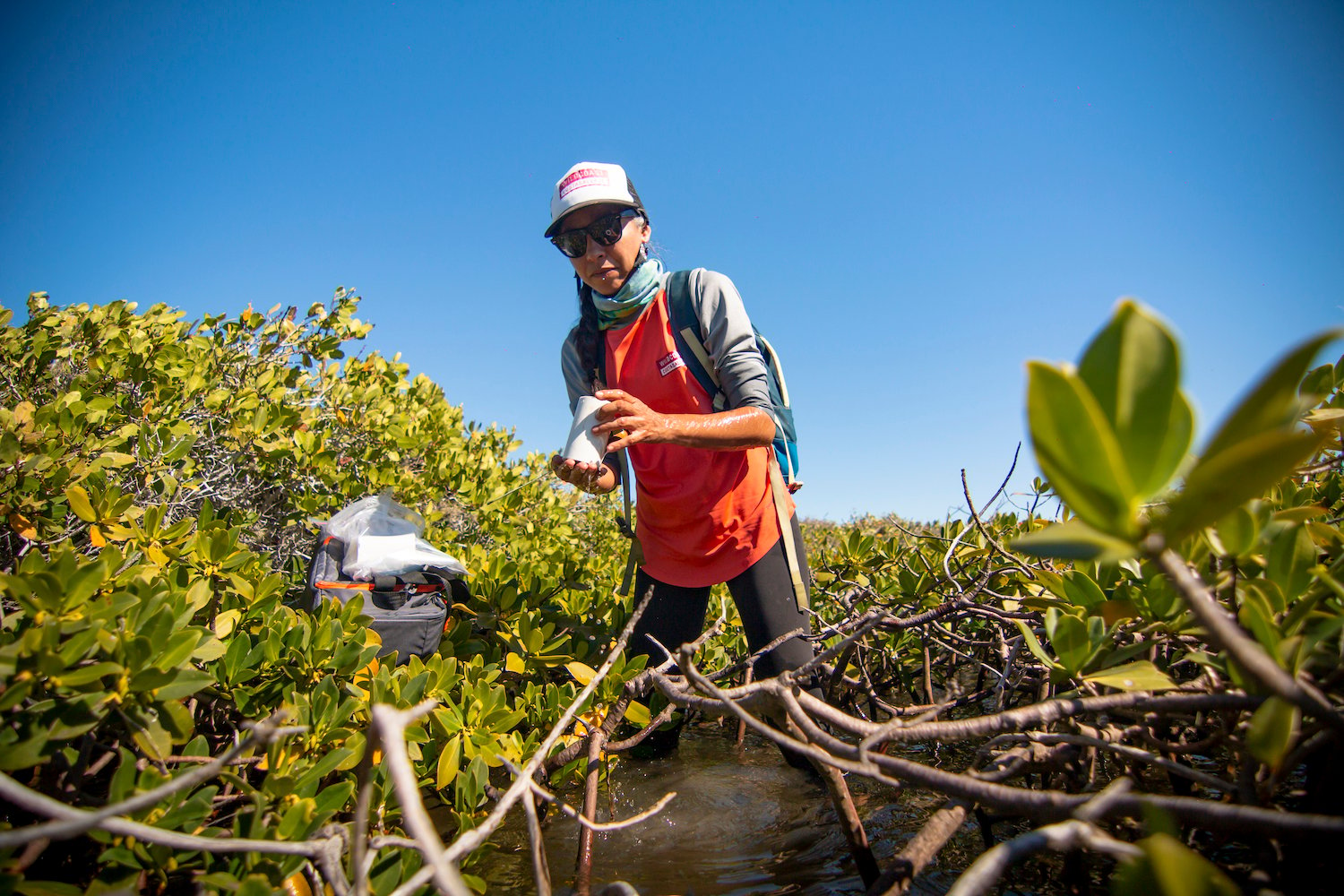
A Wildcoast staff member monitors mangrove health in San Ignacio Lagoon in Baja.
In 2012, Wildcoast teamed up with NGOs and government officials to designate and protect important keystone coastal regions, like rocky reefs, kelp forests, and wetlands. Matlahuayl State Marine Reserve, which roughly translates as “land of many caves” in the area’s Indigenous Kumeyaay language, houses pregnant leopard sharks who come to bask in the warm waters, a tactic that shortens their gestation period by two months. Swami’s is the only kelp and eelgrass habitat between La Jolla and Palos Verdes.
The health of MPAs depends on compliance of no-take zones—areas where you cannot pull anything from the water, including fish. MPA Watch, San Diego’s citizen science group, monitors on land. Lifeguards and state park officials also supervise from shore. Wildcoast uses boats and radars to ensure no one fishes inside the MPA boundary.
For now, Wildcoast’s efforts appear to be mostly working. On a recent holiday weekend, Mulligan explains, they’d encountered a few boats fishing in the MPA, but most folks said they just didn’t know there was a boundary they couldn’t cross.
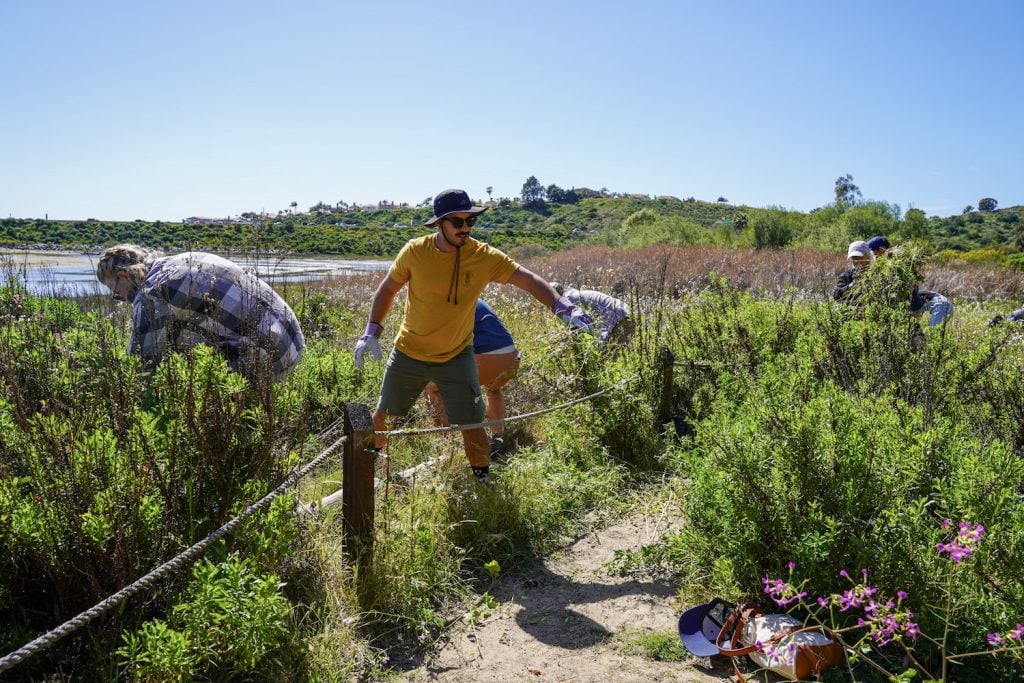
A Wildcoast team uproots invasive plants in Carlsbad’s Batiquitos Lagoon.
Mulligan often approaches these teachable moments with data, citing a 2022 Decadal Management Review proving that species diversity in MPA intertidal habitats is higher and more stable than outside MPAs and fish are more abundant, are larger, live longer, and produce more offspring. Another study showed MPAs may be more resilient to heatwaves, too. And, because species that become abundant in the MPAs leave the areas’ boundaries and increase populations in the surrounding waters, their success creates a domino effect.
Just before we head back into Mission Bay, Captain the dog lifts onto two legs and starts howling. A massive pod of dolphins leaps into our wake. There have to be 50 small cetaceans surrounding us, playing together, finding the dolphin equivalent of joy. Mulligan kicks off her shoes, gleeful.
“This never gets old,” Cooper says. His sunkissed face explodes into a grin.
Mulligan points at the dolphins vaulting around the boat. “They are why we do this.”
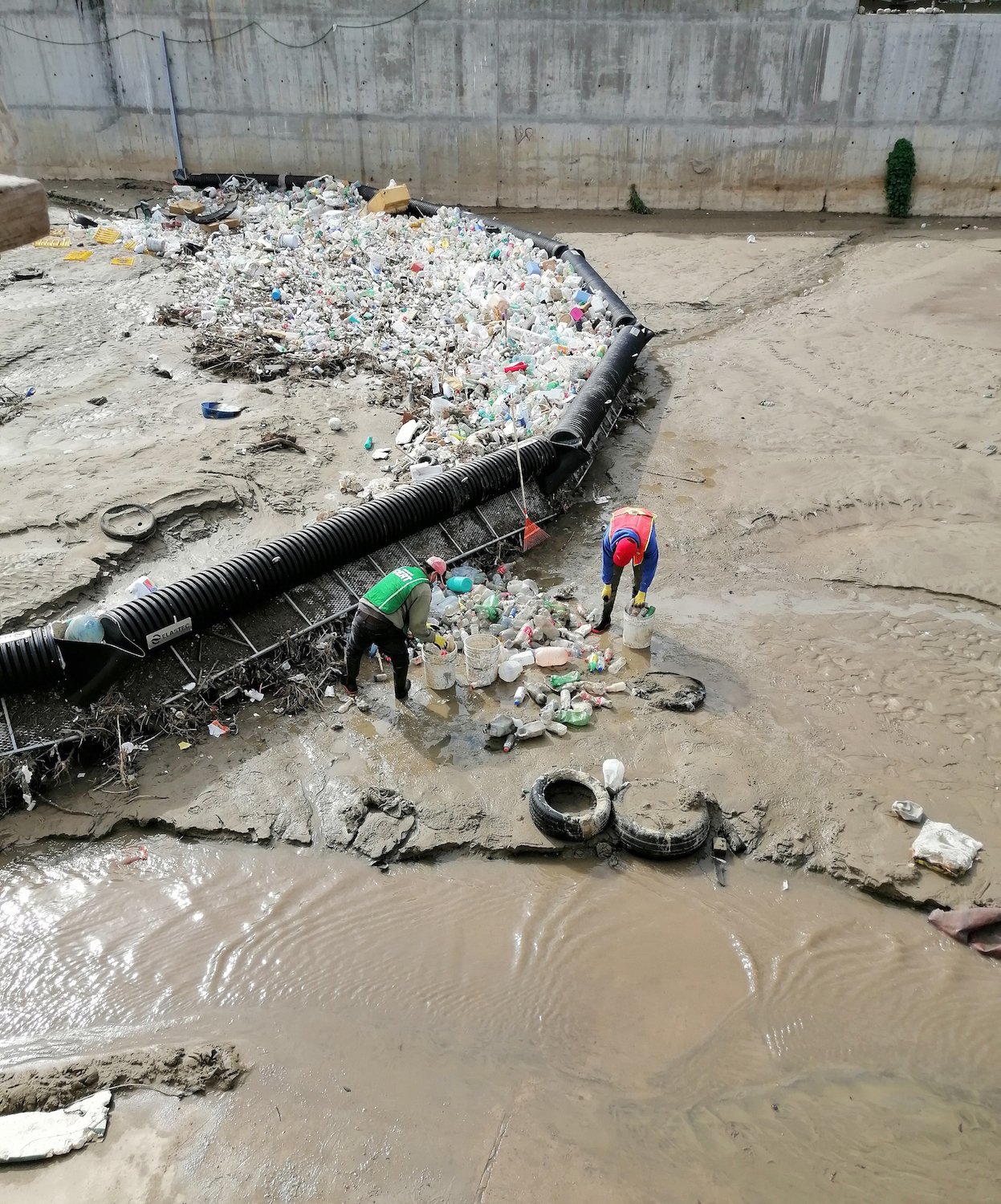
Trash booms in Tijuana keep garbage from reaching the sea.
My tour of San Diego’s MPAs takes me to all but one: the Tijuana River Mouth State Marine Conservation Area. Once a gorgeous southern California wildland with perfect surf, today the area is an environmental travesty plagued by pollution.
Despite Wildcoast’s knack for pulling off feats of conservation in unlikely places, even Dedina, former mayor of Imperial Beach, cannot yet do away with the 60 million gallons of raw sewage seeping into the ocean each day. This year, South County waters have been too polluted to enter for more than 1,000 days. The situation is now the longest-lasting environmental disaster in US history.
Still, Wildcoast is doing what it can. The nonprofit’s marine debris manager in Tijuana, Rosario Norzagaray, is leading an educational campaign to teach locals not to toss garbage into the river. In addition, in 2021, her Wildcoast team installed a trash boom, a durable structure that catches river debris before it reaches the ocean. To date, they have collected over 250,000 pounds of garbage, repurposing old tires into playgrounds, building materials, and even structural foundations to halt hill erosion. In October, they placed a second boom, with hopes to add more in the coming years.
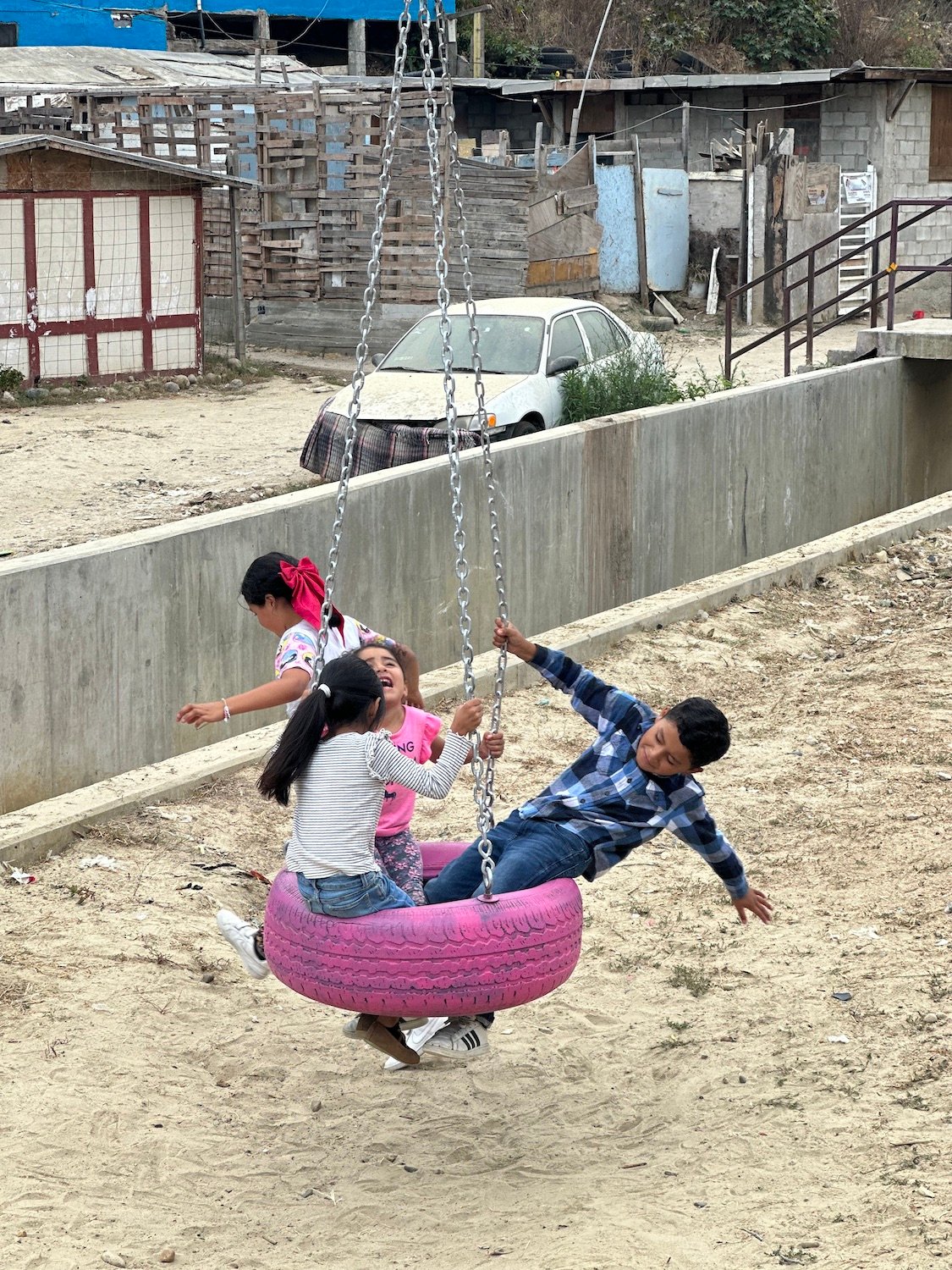
At Los Laureles Park in Tijuana, children play on structures built with tires that otherwise would’ve ended up in the Tijuana Estuary.
In addition, Norzagaray and her team have incentivized plastic as currency, adding a financial benefit to encourage residents to fight pollution in their neighborhoods. “Educating locals and installing trash booms doesn’t just empower communities,” Crevoshay says. “We’re stopping trash from floating up to San Diego.”
All this traveling through our region with Wildcoast shifted something in me. I’m no kayaker, but I’ve started regularly snorkeling, swimming, and paddle boarding in La Jolla. The ocean is no longer a stranger to me. There’s treasure here; I like to engage with it. And when I do, I often remember something Dedina told me.
“We cannot allow the problem to overwhelm the solution,” he said. “You can support efforts to safeguard and steward the place in San Diego that brings you joy, or you can ground yourself in despair. Why not ground yourself in solving the problem?”
Editor’s Note: The print version of this article, published November 2024, mistakenly stated that San Diego has six MPAs and misstated the amount of garbage collected by Wildcoast’s trash boom. We have also removed an incorrect quote.
